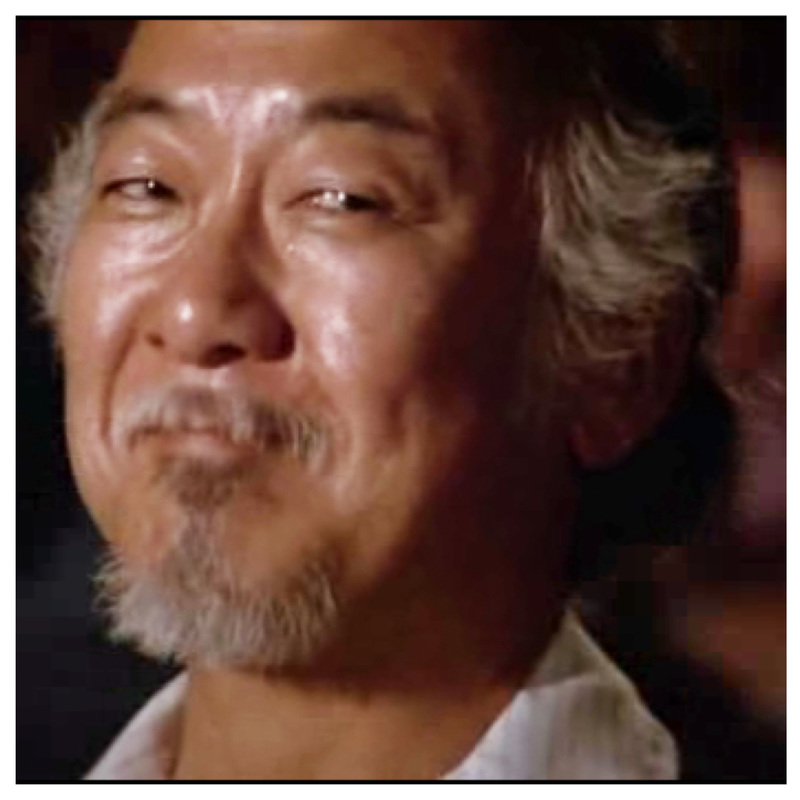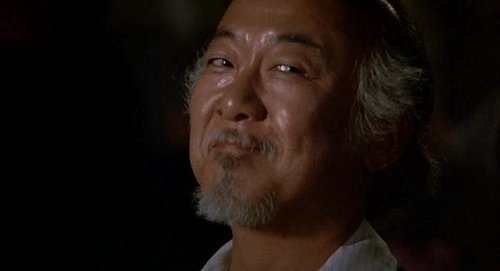
He found work throughout his career in lead roles, bit parts and voice-overs. In 1987, ABC gave him a chance to headline a detective show, “Ohara,” which went through several plot changes in a run that lasted a couple of seasons.
#Who played mr. miyagi series
and Tina,” becoming the first Japanese American to star in series TV. But he left that show quickly to star in his own ABC comedy series, “Mr T. The next stop on the dial was on “Happy Days” as Arnold, the owner of the malt shop where Fonzie and his pals hung out. He surfaced again in 19 on “Sanford and Son,” playing Ah Chew, a pal of Lamont Sanford. In 1967, he made his film debut in “Thoroughly Modern Mille,” and two years later he made his debut as a series regular on the sitcom “The Queen and I,” which quickly came and went. “If I tried it in Japan before the war, it would have been considered blasphemy, and I would have ended in leg irons.” “Only in America could you get away with the kind of comedy I did,” he once noted.

His family said they took pride in the fact that he once appeared with Redd Foxx at the Apollo Theater in Harlem. He opened for top acts, including Ella Fitzgerald, Johnny Mathis and Diana Ross and the Supremes, and eventually became a headliner in Las Vegas showrooms and at Playboy Clubs across the country. “I turned on all the angelic, cherubic charm I could find and I went out and I said, ‘Before I begin, I just want to say I’m sorry about messing up your harbor.’ There was second of silence, and then a big wave of laughter started at the back and rolled forward. “ ‘It’s the 25th anniversary reunion of the Survivors of Pearl Harbor.’ ‘Don’t you know who has the club tonight?’ ‘No,’ I say. ‘Aren’t you terrified?’ ‘Why should I be terrified?’ I ask, all confidence.

A waitress walks by me and almost drops her tray. “The opening act is 80 Polynesian dancers. “Opening night I’m waiting in the wings,” he told The Times some years ago. One engagement in Honolulu, filling in for singer Don Ho, left an impression. He worked anywhere and any time - sometimes 50 weeks a year - through the mid-’60s. He found more substantial stand-up comedy work, was given the nickname “The Hip Nip” and was eventually booked on ABC’s “The Hollywood Palace” variety show. He found gigs as a comedian in San Francisco and soon packed up his family and moved to Los Angeles. With a wife and a baby, Morita needed a steady check and worked as a data processor for the state Department of Motor Vehicles and then Aerojet General Corp.įeeling out of place and disliking the work, Morita decided to try his hand at show business. His family was later sent to the camp at Tule Lake in Northern California.Īfter the war, Morita graduated from high school in Fairfield, Calif., and worked picking fruit before settling with his family in Sacramento, where they opened a Chinese restaurant that did well until Morita’s father was killed in a hit-and-run accident.
#Who played mr. miyagi how to
Released from the facility after undergoing extensive spinal surgery and learning how to walk, the 11-year-old Morita found himself in the relocation camp at Gila River, Ariz., joining his family and thousands of other Japanese Americans rounded up after Japan’s attack on Pearl Harbor. He contracted spinal tuberculosis when he was 2 and spent the next nine years in a sanitarium run by Catholic priests and nuns near Sacramento. The younger of two children of migrant fruit pickers, Noriyuki Morita was born in Isleton, Calif. And his early life was anything but athletic. But unlike Lee, Morita knew little about martial arts before he took up the Miyagi role. Children flocked to instruction studios, and competitions sprouted up quickly around the country. The “Karate Kid” films sparked a renewed interest in the martial arts, which had first surfaced with the Bruce Lee film craze in the early 1970s. My life is all the richer for having known him. “He had touched so many lives with his vast body of work.


Morita “was a truly generous actor, a gifted comic and an even greater friend,” Macchio said in a statement released to the Associated Press. This time, however, the kid was a girl, played by Hilary Swank. In “The Next Karate Kid,” the fourth installment in the series, the producers came up with a plot twist, replacing Macchio - by then in his early 30s - with another kid struggling against classmates. Two sequels of “The Karate Kid” featured Morita and Macchio. Morita’s performance earned him an Academy Award nomination for best supporting actor, but the award that year went to Haing S.


 0 kommentar(er)
0 kommentar(er)
